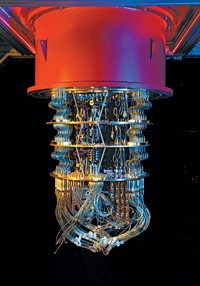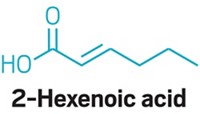Advertisement
Grab your lab coat. Let's get started
Welcome!
Welcome!
Create an account below to get 6 C&EN articles per month, receive newsletters and more - all free.
It seems this is your first time logging in online. Please enter the following information to continue.
As an ACS member you automatically get access to this site. All we need is few more details to create your reading experience.
Not you? Sign in with a different account.
Not you? Sign in with a different account.
ERROR 1
ERROR 1
ERROR 2
ERROR 2
ERROR 2
ERROR 2
ERROR 2
Password and Confirm password must match.
If you have an ACS member number, please enter it here so we can link this account to your membership. (optional)
ERROR 2
ACS values your privacy. By submitting your information, you are gaining access to C&EN and subscribing to our weekly newsletter. We use the information you provide to make your reading experience better, and we will never sell your data to third party members.
Physical Chemistry
Sizing The Proton
Fundamentals: Latest data reveal proton is smaller than believed
by Jyllian N. Kemsley
July 12, 2010
| A version of this story appeared in
Volume 88, Issue 28
A new experiment indicates that the proton may be significantly smaller than previously believed, a result that could change the value of key physical constants, reports a group led by physicist Randolf Pohl of the Max Planck Institute for Quantum Optics, in Germany (Nature 2010, 466, 213).
The group studied muonic hydrogen, in which the hydrogen atom’s usual electron is replaced with a muon, a particle that has the same charge but is 200 times heavier than an electron. The researchers used laser pulses to probe the energy difference between two states of the atom and then used that difference to calculate the proton’s charge radius, a measure of the spread of its positive charge.
From the muonic hydrogen experiment, Pohl and coworkers found that the charge radius of the proton is 0.84184 femtometers. That radius differs significantly from the previously accepted value of 0.8768 fm, which the International Council for Science’s Committee on Data for Science & Technology (CODATA) settled on in 2006 after reviewing results from experiments involving the scattering of electrons off protons and the spectroscopy of atomic hydrogen.
A significantly different value for the proton radius will affect physical parameters such as the Rydberg constant, which represents the lowest-energy photon that can ionize the hydrogen atom from its ground state. And since all fundamental constants are locked to each other, “if one changes, they all change”—even Avogadro’s number, says Richard N. Zare, a chemistry professor at Stanford University.
More experiments will be needed to determine whether the new value for the proton radius is correct and whether the difference from the previous value is due to experimental issues or a problem with the theory underpinning the analysis, says Jeff L. Flowers, a scientist with the U.K.’s National Physical Laboratory.






Join the conversation
Contact the reporter
Submit a Letter to the Editor for publication
Engage with us on Twitter